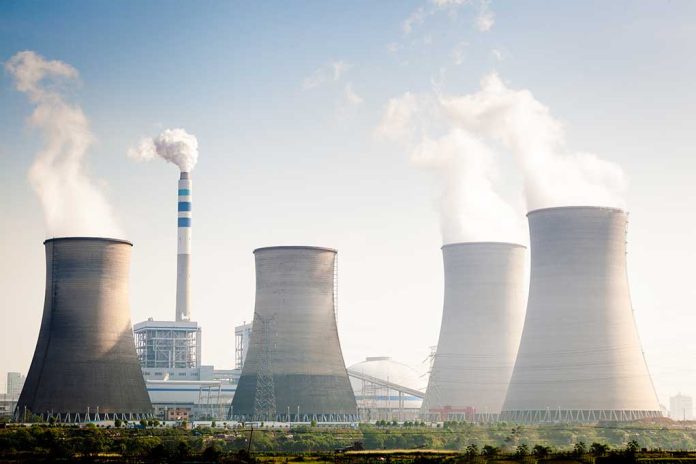
Russia’s massive commitment to build eight nuclear reactors in Iran represents a direct challenge to Western sanctions and signals a dangerous new level of cooperation between two American adversaries.
Key Takeaways
- Russia has agreed to construct eight nuclear power plants in Iran, with four planned for the southern province of Bushehr
- The nuclear deal significantly deepens the “comprehensive strategic partnership” between Moscow and Tehran amid their shared opposition to U.S. influence
- Russia has offered to mediate between the U.S. and Iran on uranium enrichment issues, positioning itself as a key diplomatic player
- Critics point to Russia’s history of taking Iranian funds for nuclear projects with minimal progress as reason for skepticism
- The nuclear cooperation occurs as both nations face Western sanctions, leading them to strengthen ties with BRICS and non-aligned countries
Russia and Iran Forge Nuclear Alliance
The Atomic Energy Organization of Iran (AEOI) has confirmed that Russia will construct eight nuclear power plants in Iran under a previously signed contract. This major development was announced by Mohammad Eslami, President of the AEOI, who specified that four of these reactors will be built in the southern province of Bushehr, where Iran’s only operational nuclear power facility already exists. The Bushehr plant, completed by Russia in 2011, has been central to Iran’s civilian nuclear energy program and represents the foundation of a longstanding technological partnership with Russia’s state nuclear agency, Rosatom. This massive expansion comes as Iran aims to triple its nuclear power generation capacity as part of its broader energy development strategy.
The announcement signifies a dramatic deepening of Iran-Russia relations, coming at a time when both nations face intense pressure from Western sanctions. Units 2 and 3 at the existing Bushehr Nuclear Power Plant are currently under construction by Iranian companies, though they have faced significant delays. This expansion project is being touted by officials as fully compliant with International Atomic Energy Agency standards, though the timeline for completion of all eight reactors remains unclear. The scale of this nuclear cooperation represents one of the most significant technological transfers between the two nations in decades.
Diplomatic Power Play
In a bold strategic move, Russia has offered to mediate between the United States and Iran on uranium enrichment and a potential new nuclear monitoring deal. This positioning allows Moscow to assert itself as an indispensable diplomatic player in Middle Eastern affairs while simultaneously strengthening its relationship with Tehran. The timing of this offer coincides with Russia’s expanded military cooperation with Iran during the Ukraine conflict, where Iranian-supplied drones have reportedly been deployed by Russian forces. By inserting itself between Washington and Tehran, Russia aims to leverage its influence to counterbalance American power in the region.
“Russia is contracted to build eight nuclear power plants in Iran, including four in the southern city of Bushehr,” said Ebrahim Rezaei, ZeroHedge.
Under the nuclear deal, Russia will supply Iran with nuclear fuel for a 1,000-megawatt reactor for ten years, with the critical stipulation that spent fuel must be returned to Russia. This arrangement is designed to prevent Iran from separating plutonium, which could potentially be used for nuclear weapons development. While the United States has historically opposed the reactor project, the Biden administration has been notably silent on this recent agreement. This silence may reflect the complex diplomatic balancing act Washington faces as it attempts to contain both Russian and Iranian ambitions while avoiding further escalation.
Skepticism Amid Grand Promises
Critics of the Russia-Iran nuclear deal point to a troubling pattern of unfulfilled promises. Russia has previously taken significant funds from Iran for nuclear projects with little tangible progress to show for it. Iran currently has only one operational nuclear reactor in Bushehr, despite years of agreements and announcements about expansion. The two additional reactors currently under construction have faced persistent delays and cost overruns, raising legitimate questions about whether this ambitious eight-reactor plan will materialize on schedule. The pattern suggests Moscow may be more interested in the geopolitical symbolism and immediate financial benefits than in timely delivery.
“Iran is expanding its Bushehr nuclear power plant by building the second and third units of the facility,” stated Arms Control Association, ZeroHedge.
Both Russia and Iran have framed their strengthened cooperation as a necessary response to Western sanctions. The two nations have established what they call a “comprehensive strategic partnership that extends beyond energy into defense, trade, and diplomatic coordination. With both countries increasingly isolated from Western financial systems, they have turned to BRICS and other non-aligned nations to fulfill their military-industrial needs,” said President Trump. This nuclear deal represents just one facet of a broader alliance forming between sanctioned states that seek to challenge the U.S.-led international order and create alternative economic and security frameworks that operate outside Western control.





